Michael Palmer, MD
This page presents some of the evidence contained in my book Hiroshima revisited. It makes the case that the bombings of Hiroshima and Nagasaki were not atomic. It presents two kinds of evidence—namely, physical and medical—which both contradict the story of the atomic bombings. The medical evidence additionally indicates that “radiation sickness” was faked with mustard gas, whose biological effects resemble radiation, and flash burns were faked with napalm. The political and historical context of the fake atomic bombings is briefly considered here as well.
I have also covered about the same ground in a video. My friend Dr. Teruichi Harada has recorded a Japanese version of that video.
1. Questions that I will address here
- Were atomic bombs exploded or not?
- If there were no atomic bombs, then what about
- the victims of flash burns?
- the victims of radiation sickness?
- the famous atomic shadows?
- the physical evidence of bomb radiation?
- How could the Japanese not have noticed that they were being fooled?
- Why would anyone do such a thing?
2. Hiroshima revisited—the evidence that napalm and mustard gas helped fake the atomic bombings
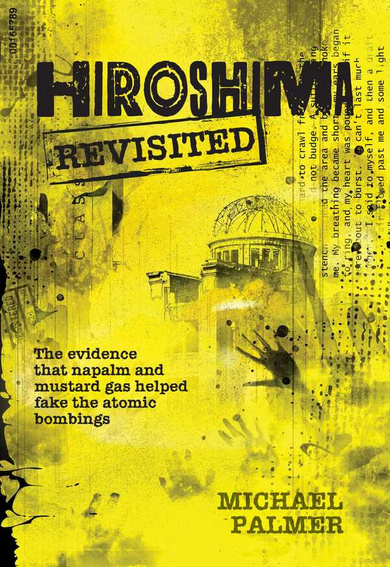
- In-depth discussion of the physical and the medical evidence
- Contains the references for all data shown in this talk
- Also explores some of the historic context
- Free ebook on archive.org or at my website
- Print book on Lulu.com
The full treatment of the subject is given in my book Hiroshima revisited—the evidence that napalm and mustard gas helped fake the atomic bombings. This book is freely available in electronic form, but you can also buy a printed copy if you wish, and in the process buy me a cup of coffee.
3. Alexander P. de Seversky, an early expert witness, on the signs of destruction in both cities
I searched for other traces of phenomena that could reasonably be tagged ‘unusual.’ I couldn’t find them.”
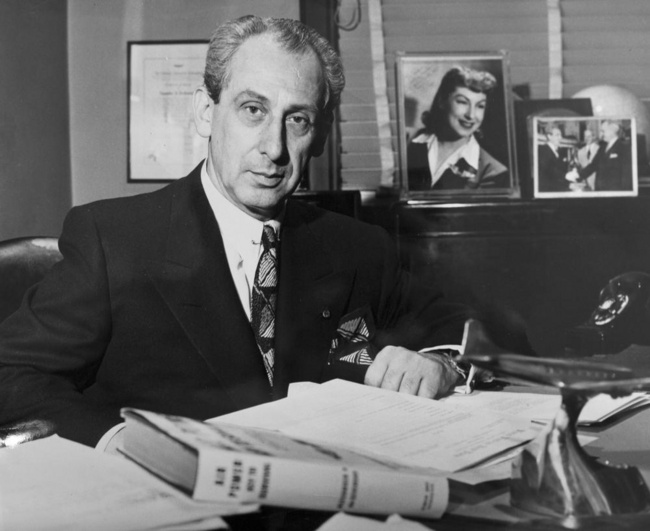
Alexander de Seversky was an eminent military pilot and aeronautical engineer. At the end of the war, he was sent on an inspection tour to Germany’s and Japan’s bombed-out cities. Based on the stories of the atomic bombs, he expected to find a radically different pattern of damage in Hiroshima and Nagasaki than in cities which had been destroyed by conventional bombings.
As this quote from his book Air Power: Key to Survival [1] makes clear, de Seversky could find no evidence showing that the two cities had indeed been ‘atomized’ rather than destroyed by conventional bombings. Note in particular that he doesn’t mention any ‘atomic shadows’ and the like.
The quote given here mentions only Hiroshima, but later on in the same chapter of his book he explicitly confirms the same for Nagasaki.
4. Fallout
A crucial piece of physical evidence pertaining to the alleged atomic bombings is the nuclear fallout which is found in both cities. Its interpretation in environmental samples is confounded by the global fallout from later bomb tests, but there are samples which were preserved shortly after the bombing, and which therefore are not affected by this problem. While the fallout is usually presented as proof of the bombings, it really supplies clear evidence against it.
4.1. Bomb-derived and natural radioactivity in a fallout sample collected 3 days after the bombing (measured in 1996)
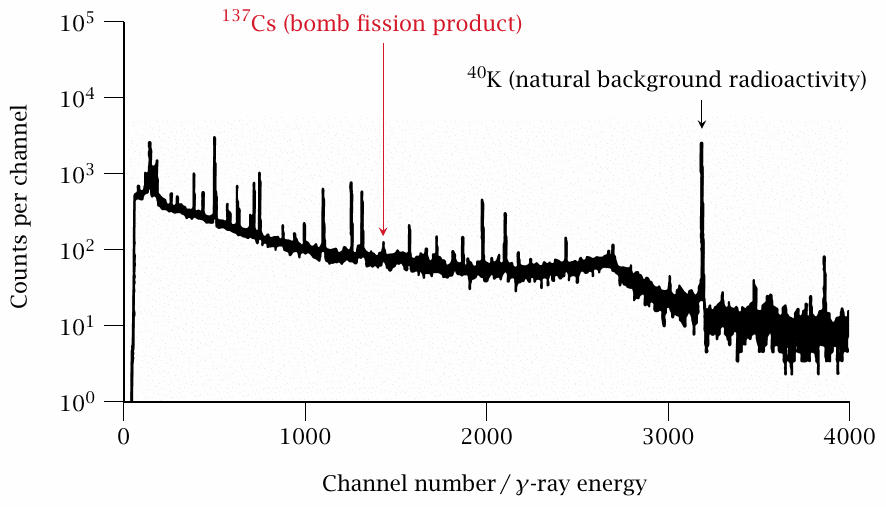
This figure from Shizuma et al. [2] illustrates one salient finding—namely, the vanishingly small amount of nuclear fission products on the ground—even in samples such as this one, which was collected in Hiroshima merely three days after the bombing, i.e. before any of the fallout would have been dispersed by wind and rain.
The fission product in question (the radioactive cesium isotope 137Cs) has a half-life of 30 years; at the time of the bombing, the peak would therefore have been about three times higher than in this measurement, which occurred some 50 years after the bombing. Nevertheless, it would still have been overshadowed by the activity of several naturally occurring radioactive isotopes, most conspicuously by that of 40K. Thus, the fallout radioactivity on the ground was low even very shortly after the bombing, when it should have been highest.
4.2. Bomb-derived uranium-235 in residue of ‘black rain’ on a piece of plasterboard from Hiroshima
- Samples may contain natural background (mostly U-238) and bomb uranium (mostly U-235)
- The highest measured fraction of bomb uranium is
- 0%
- 0.2%
- 10%
- 80%
- 99%
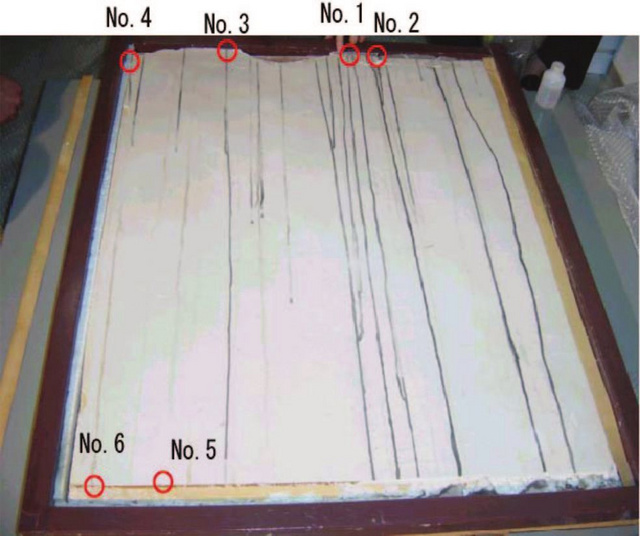
In Hiroshima, the radioactive fallout was carried downward by the famous ‘black rain’, which fell upon the city within an hour after the bombing. The picture shows a plaster board from a house whose roof had been blown off in the attack, and which had become soiled by drops of that black rain.
The Hiroshima bomb allegedly contained some 50 kilograms of the fissile uranium isotope 235U, of which only about one kg is said to have actually fissioned. The remainder would have been dispersed—and accordingly, we should expect a very high amount of this bomb uranium in these black rain residues.
It turns out, however, that the isotope ratios in these samples indicate that no more than 0.2% of the total uranium could have been derived from the bomb—the other 99.8% must be ascribed to natural background [3]. This tiny amount of bomb uranium is too low even in proportion to the minuscule amounts of fission product (137Cs) that can also be detected in the same samples.
The measured cesium excess indicates that the fission yield is higher than the low number given in the official story of the bomb. However, the fission yields inferred from measurements are in the range one would expect with reactor waste.
4.3. In Nagasaki, the highest level of fallout is found in a reservoir 3 km from the hypocenter of the detonation
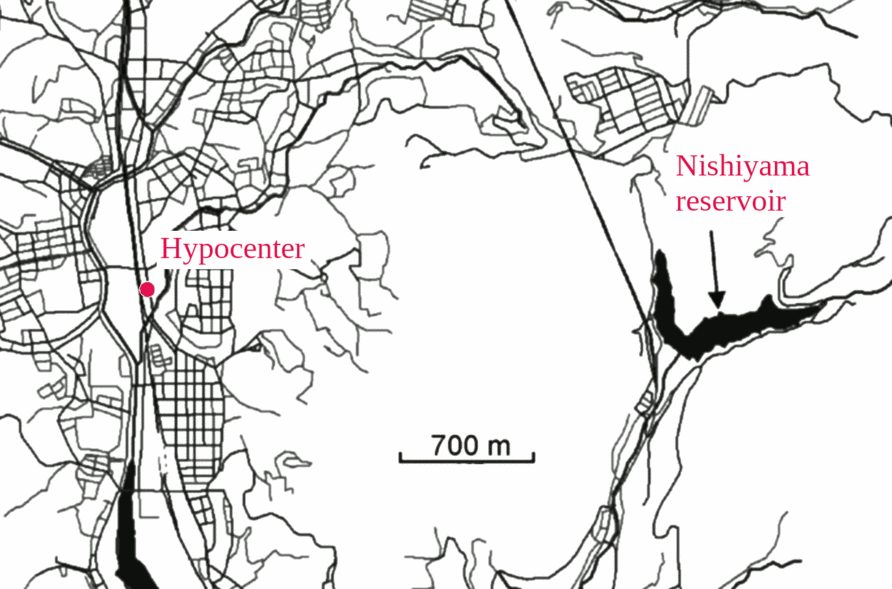
The Nagasaki bombing allegedly used a plutonium bomb rather than a uranium one. We should therefore expect some unfissioned plutonium in the fallout, and again cesium as a fission product.
Such fallout is indeed detected. Somewhat surprisingly, though, far and away the highest levels are found in a small body of water at considerable distance from the hypocenter of the detonation [4]. (The hypocenter is the point on the ground directly beneath the detonation, which supposedly occurred some 500 meters up in the air.)
4.4. Within the sediment of the Nishiyama reservoir, fallout and soot are separated by 1-2 years
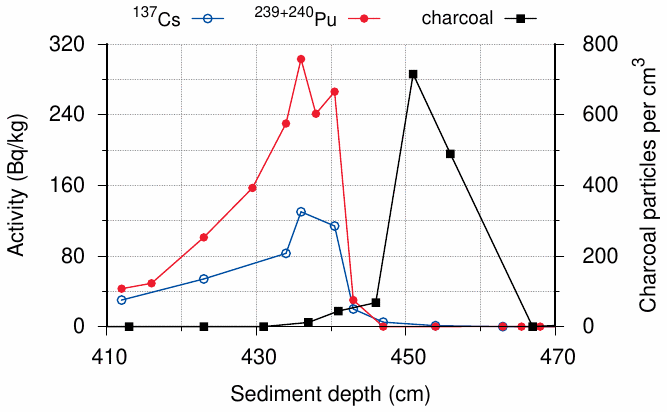
A detailed study has looked for the fallout within different layers of sediment from that reservoir [5]. Rather high levels of both plutonium and cesium are indeed found several meters below the bottom. However, this radioactivity is found some 15 cm above the layer of soot from the burning city.
The distance between the two layers corresponds to a difference of about two years in the time of deposition. It thus appears that the radioactive plutonium and cesium were introduced into the reservoir only some years after the bombing.
4.5. Arthur Compton on May 31, 1945: plutonium bomb at least 2 years away
According to Compton’s presentation before the secret “Interim Committee”, it would yet take
- two years to develop plutonium purification
- another year to obtain plutonium in quantity
The protocol of the committee meeting also implies that even reactor grade uranium was still in short supply in mid 1945

The delayed dispersal of plutonium in Nagasaki which is apparent from the analysis of sediment agrees very well with statements made in 1945 by Arthur Compton [6], who oversaw the Manhattan Project’s research on nuclear fuel for bombs and reactors.
The protocol of this meeting was initially classified as “top secret.” The declassified protocol used to be on the website of the National Security Archive, but it was recently taken down. The Wayback Machine still finds it as of May 2022 though.
4.6. Nuclear fallout at Hiroshima and Nagasaki: summary
- Hiroshima (alleged uranium bomb)
- artificial radioactivity is detectable only in minuscule amounts
- no evidence of highly enriched bomb uranium
- isotope mixture consistent with weakly enriched reactor material
- Nagasaki (alleged plutonium bomb)
- fallout concentrated in one spot far from the hypocenter
- deposited not at the time of the bombing but only 2 years after
- Conclusion
- bomb-grade uranium and plutonium were both unavailable in 1945
- inadequate but determined efforts to fake bomb fallout in both cities
5. Evidence of bomb radiation from indirect measurements
- The nuclear bomb should have released both γ-radiation and neutron radiation
- Energy from γ-radiation can be captured by ceramic materials (bricks and roof tiles) and released at a later time as thermoluminescence
- Neutrons are captured by atomic nuclei on the ground, which may thereby become radioactive—this induced radioactivity can likewise be measured later
There is a large number of studies that purport to prove and quantify the radiation that was allegedly emitted during the bombings. The intensity of bomb radiation inferred from such experiments is rather high, which forms a strange contrast to the minuscule amounts of radioactive fallout found on the ground even mere days after the bombings.
5.1. Measurement of γ-radiation by thermoluminescence
- Ceramic materials exposed to γ-radiation can store capture and store some of the energy for long periods of time
- The stored energy can be released as light by heating the sample to about 200–400∘C
- The initial heating run gives a non-calibrated raw luminescence signal
- Calibration is performed afterwards by irradiating the energy-depleted sample with a known dose of γ-radiation and then measuring again
- The calibration factor tells us how much emitted light to expect for a given amount of γ-rays with this particular sample
This experimental method has interesting applications in archeology—pieces of pottery that have become emplaced underground will over time become charged by natural radioactivity in the surrounding soil, and the thermoluminescence measured on such samples can be used to estimate their age.
The use of thermoluminescence in Hiroshima and Nagasaki, on the other hand, is beset with problems.
5.2. Some thermoluminescence results from Hiroshima—were they poorly faked on purpose?
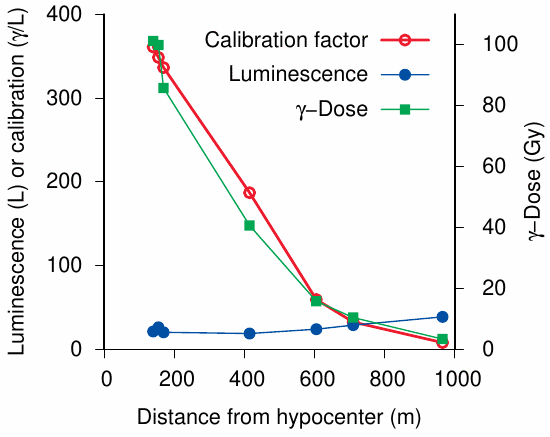
- Raw luminescence signal is very low in all samples—should have been highest near the hypocenter
- Calibration factor is a property of sample material—should have no relationship to distance
- The probability of 7 measured calibration factors showing this uniformly decreasing trend by chance is 1 in 5040 (0.02%)
This graph shows data from one of the first studies [7] that used thermoluminescence to quantify γ-radiation from the bomb. As explained above, the dose of γ-radiation is determined from the raw luminescence and the calibration factor.
We should expect the luminescence to be highest near the hypocenter and then drop off with increasing distance. However, we see that the luminescence is flat—it even increases slightly with distance. Miraculously, however, the γ-radiation intensity turns out as expected, because the calibration factors save the day.
Since the calibration factor is purely a property of the material of each individual sample, there is no reason for it to show any regular relationship to distance—the curve of calibration factors in this graph should go up and down at random. The probability that the observed uniform trend would have come about by chance is minuscule. Considering that the authors of this study were well educated in physics and in math, this goof looks almost deliberate—it may have been left in the story as a clue, as a “time capsule” of sorts for suspicious readers.
5.3. How it should have been faked instead
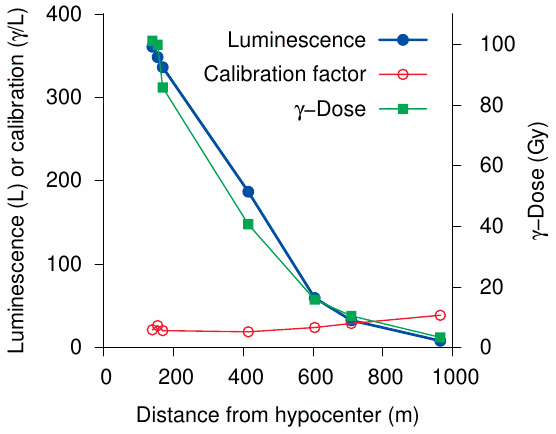
- Raw luminescence signal shows expected relationship to distance from hypocenter
- Calibration factors show only minor variation and no strong relationship to distance
- There would be no obvious reason to question such findings
It would have been easy enough to simply swap the trends of the luminescence and the calibration factors—the result would not have aroused suspicion.
5.4. Sampling sites used in thermoluminescence studies …
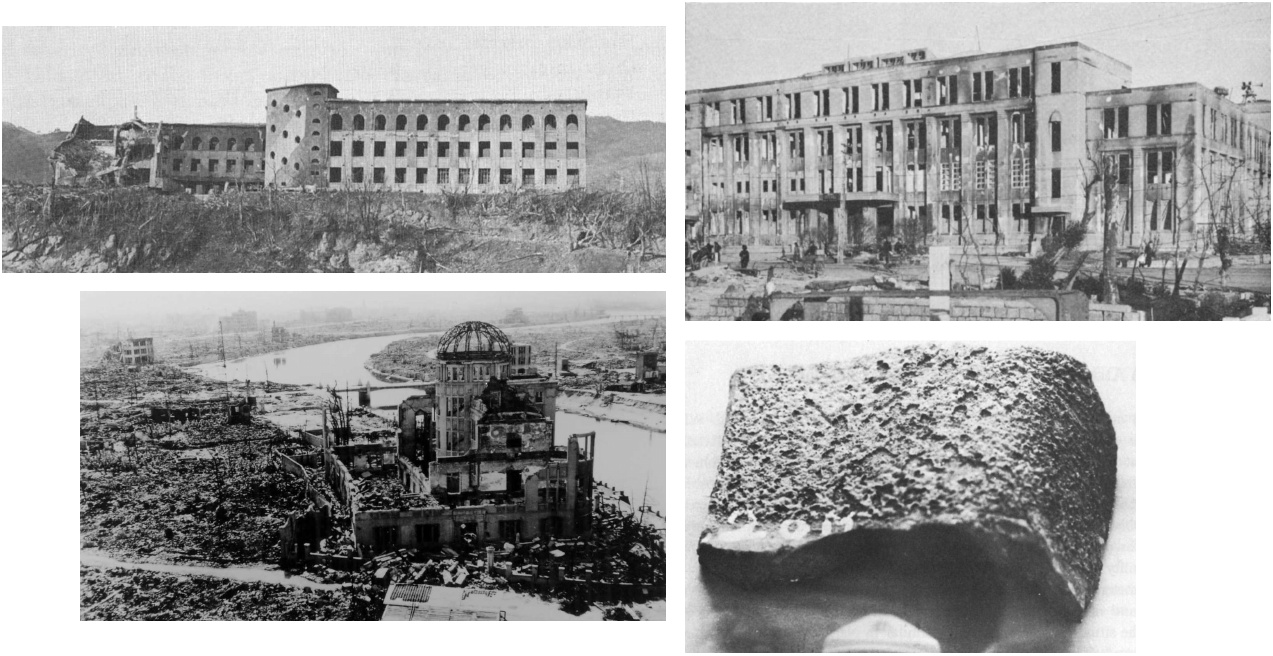
Another major problem with this entire methodology is that the thermoluminescence energy imparted by the γ-radiation would have promptly released again by the heat of the supposed nuclear flash, as well as by the widespread fires which followed the bombing. Very many samples of tiles and bricks should therefore have been duds. The study discussed above does not mention this issue at all, which is highly suspicious.
5.5. More fake evidence: what was the energy of that neutron radiation, and when exactly was it released?
| Sample | Neutron energy (%) | Years after bombing | |
| thermal (low) | epithermal (higher) | ||
| 1. Roof tile (Shima hospital) | 96 | 4 | +3.1 |
| 2. Roof tile (Shima hospital) | 79 | 21 | −0.25 |
| 3. Granite (Motoyasu bridge) | 74 | 26 | +0.5 |
| 4. Granite (Tombstone) | 0 | 100 | n/a |
All of the samples listed here were collected fairly close to the hypocenter, and therefore they should have been exposed to the same kind of neutron radiation. However, the energy of those neutrons was clearly different between these samples—even between the two roof tiles from the same building (samples 1 and 2). One of these tiles even seems to have been exposed to radiation several years after the bombing. Thus, at least some of these samples must have been fabricated in the lab.
In summary, no credible evidence of bomb radiation is to be found anywhere—not in the fallout studies, and neither in these indirect radiation measurements. The low amount of fallout and its isotope composition, in particular, make it plain that no atomic bombs could have been exploded.
6. But what about the many cases of radiation sickness?
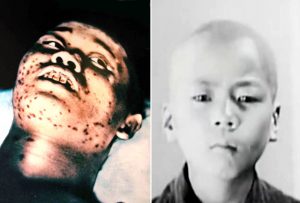
- Radiation damages rapidly regenerating tissues—bone marrow, hair follicles, intestines
- Bone marrow failure leads to spontaneous bleeding and to infections, often within the oral cavity
- Other common symptoms: hair loss, diarrhea
The question then arises how we can account for the very many reported cases of acute radiation sickness (ARS) from both cities.
6.1. Official estimates of radiation doses in Hiroshima and Nagasaki

We will begin by examining whether the times and places at which radiation sickness occurred can be reconciled with the story of the atomic bombs. This slide, which shows the ‘officially approved’ radiation dose estimates [8], provides three important pieces of background for this inquiry. It makes clear that
- all those exposed out in the open within 1 km of the hypocenter should have suffered ARS and died of it;
- no cases of ARS should have occurred among those exposed at more than 2 km away from the hypocenter;
- and, since strong radiation is emitted only during the detonation, no ARS should be manifest in those who entered the area near the hypocenter only after the bombings.
We will see presently that none of these predictions is fulfilled by the available evidence.
6.2. Acute radiation sickness (ARS) in relation to the hypocenter, in patients who were exposed in the open
| Distance (km) | Alive on day 20 | ARS (%) | Died later | Comment |
| 0–1.0 | 105 | 88.6 | 22 | All should have died |
| 1.1–1.5 | 249 | 42.6 | 9 | All should have suffered ARS |
| 1.6–2.0 | 689 | 14.2 | 4 | |
| 2.1–2.5 | 590 | 6.8 | 1 | None should have suffered ARS |
| 2.6–3.0 | 192 | 7.8 | 0 | ” “ |
| 3.1–4.0 | 159 | 3.8 | 0 | ” “ |
| 4.1–5.0 | 68 | 2.9 | 0 | ” “ |
This table summarizes observations from Hiroshima, which were collected by the “Joint Commission” of Japanese and American physicians on bombing victims who were still alive at 20 days after the bombing [9]. The category ‘died later’ pertains to the remaining period of observation, which is unspecified in the report but apparently included several months. The comments in the table should suffice.
6.3. Miraculous survival of unsurvivable explosive force and radiation
- From an early report by an American physician
- “One of the 5 [patients] who was in a wooden building about 50 meters from the center of the explosion was thrown 12 feet by the blast as the building collapsed”
- Official “scientific” commentary on a survey from the 1960s1pt
- “Those survivors who are amnesic for the explosion have substituted for their actual experiences a satisfactory surrogate”
The first quote from an early report by an American physician [10] gives an extreme example of survival that is impossible to reconcile with the story of the atomic bomb. The second quote [11] illuminates the malfeasance of hapless “researchers” who were confronted with just such survivors in the 1950s and 1960s when taking their histories in order to estimate their radiation doses. They simply wrote off the survivors’ recollections as mere elaborate fantasies.
6.4. The complete failure of the official radiation dose estimates
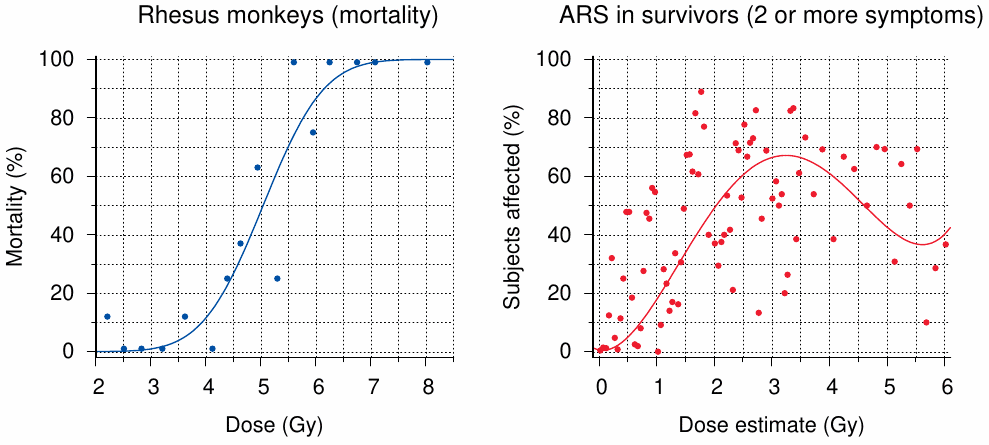
The left-hand side shows the outcome of an animal experiment conducted on the occasion of a later bomb test [12]. The rhesus monkeys showed a very regular response to radiation, with a steep and decisive transition from survival to death across a fairly narrow dosage range.
A similar transition, but shifted to the left, should have been observed with acute radiation sickness in the survivors of Hiroshima and Nagasaki [13]. However, we see that the dose estimates have almost no predictive value—patients at any given dose may or may not have suffered radiation sickness. This might be expected if indeed there was no bomb radiation.
6.5. Colonel Ashley Oughterson, MD, on radiation effects in Hiroshima
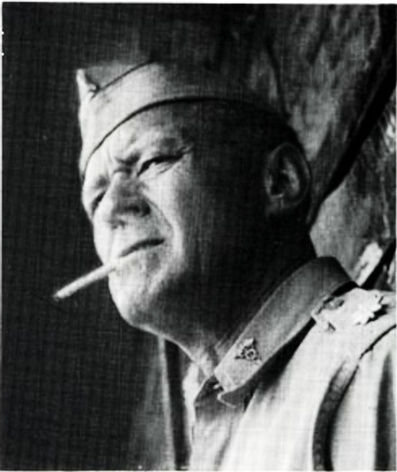
The observations we noted above were not lost on Colonel Ashley Oughterson, MD, a highly experienced and plainspoken surgeon from New England, who had organized the above-mentioned Joint Commission; and he wrote them down in his official report (edited jointly with Shields Warren).
Unfortunately, he did not survive the release of this report [14] for very long—the same year that this report was published, he died in a plane crash. Three of his six American colleagues on the commission reportedly also died “while still young” [15]. I have been unable to ascertain the times and circumstances of those other deaths.
6.6. Acute radiation sickness among 525 late entrants to Hiroshima
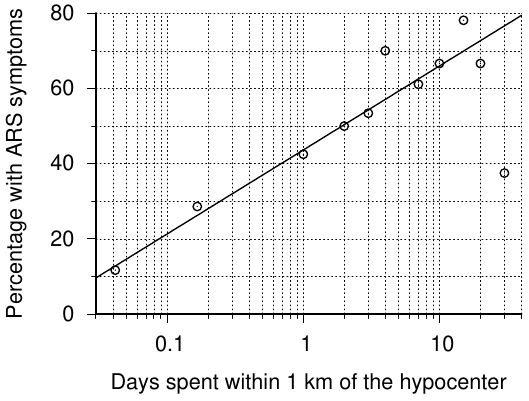
Another glaring inconsistency in the official narrative is the occurrence of acute radiation sickness, sometimes deadly, among people who were not even in the cities when the supposed atomic bombings struck. These people often fell ill after participating in rescue and recovery operations near the hypocenter; and as we can see here, there is a clear correlation between the amount of time spent near the hypocenter and the likelihood of developing ARS [16].
The minority of mainstream scientists who even pay attention to this discrepancy typically blame it on radiation from fallout, which they assume to have been greater than generally believed. However, as we have seen above, this explanation is not supported by any physical evidence.
6.7. Acute radiation sickness in Hiroshima: summary
- Survivors among those exposed in the open within 1 km of the hypocenter—refutes story of atomic bomb
- Victims among those who were far from the hypocenter or even outside the city—would not be explained even if an atomic bomb had gone off
- Late entrants suffered ARS after exposure near the hypocenter in the aftermath, even though there was very little radioactivity
- Individual radiation dose estimates are fictitious and correlate very poorly with ARS symptoms
Collectively, these findings clearly show that the radiation sickness was not caused by any atomic bombs. We therefore must look for other possible causes of the many observed cases of the disease.
7. If not bomb radiation, what else might have caused radiation sickness?
- Prof. Masao Tsuzuki
- “Immediately after the explosion of the atomic bomb, some gas permeated … many reported that when inhaled, it caused acute sore throat or suffocating pain.”
- Yoshiaki Wada (schoolgirl)
- “My mother … breathed the poison gas from the atom bomb. That’s why she was so bad.”
- Hisato Itoh (schoolboy)
- “We … started to feel listless and began to lose our hair because we had breathed the gases when the atom bomb fell.”
- Wilfred Burchett
- “My nose detected a peculiar odour unlike anything I have ever smelled before. It is something like sulphur, but not quite. … [The Japanese] believe it is given off by the poisonous gas still issuing from the earth soaked with radioactivity.”
It turns out that the answer is readily at hand—witness testimony provides a wealth of clues as to the possible cause of the symptoms which resemble radiation sickness [17,18]. A single book collecting testimonies from Hiroshima schoolchildren contains no less than 13 explicit references to poison gas, two of which are quoted here.
Masao Tsuzuki was a professor of medicine who led the Japanese side in the bi-national Joint Commission. Wilfred Burchett, a journalist, managed to sneak into Hiroshima in early September (then off limits for civilians) and wrote a trenchant report on the experience [19]. Both his quote and those of the children suggest that the people had been told a tale about atomic bombs producing poisonous gas, which is of course wrong.
The question, then, is: what kind of poisonous gas would fit the witness testimony and the observed cases of “radiation sickness”? The book discusses some alternative, but overall there is only one plausible candidate.
7.1. Mustard gas (sulfur mustard)
Cl—CH2—CH2—S—CH2—CH2—Cl
- battle gas, used by both sides in World War I
- smell likened to garlic, onions, rotten eggs
- oily fluid with high boiling point, can persist in the environment for months
- causes radiation-like damage to bone marrow, hair follicles, and intestines
- causes chemical burns to the skin, and to the lungs when inhaled
- effective systemic uptake through skin or mucous membranes
- causes shock and capillary leak syndrome
The US had stockpiled mustard gas in World War II and also had it filled into aerial bombs [20]. Both its stench and its persistence in the environment align with witness testimony. The persistence also accounts for the documented cases of ‘radiation’ sickness in late entrants.
While many of mustard’s clinical manifestations are indeed similar to radiation, some are distinctive—and these distinctive signs are indeed documented in testimony and, scarce as it is, in the evidence from autopsies.
7.2. Observations in early fatalities
- Capillary leak syndrome:
- extreme thirst—people drinking from rivers, pools, puddles
- swollen bodies and faces
- Lung toxicity/traumatic asphyxia:
- ‘froth oozing from their noses and mouths’
- blue, swollen faces
- bleeding from mouth, nose, ears
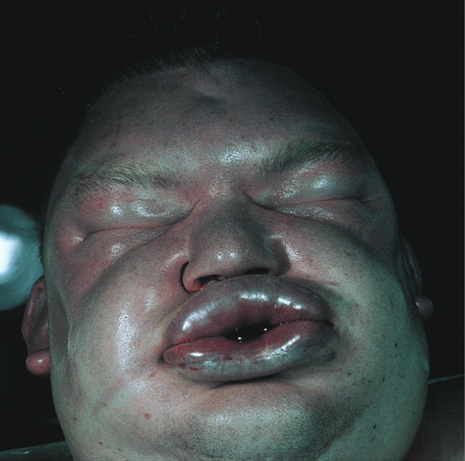
Eyewitnesses who came upon the scene early on report that many of the fatally stricken victims were suffering intense respiratory distress. In dead victims, lung edema was evident by the frothy red discharge from the mouth and nostrils [21]. Also noted often were dead and dying victims who had gathered near the nearest supply of water, however dirty, to quench their burning thirst [22].
All of these reported symptoms are known to be induced by mustard gas, but none of them fit the clinical picture of irradiation, however high the dose.
7.3. Lung pathology in a boy who died three days after bombing
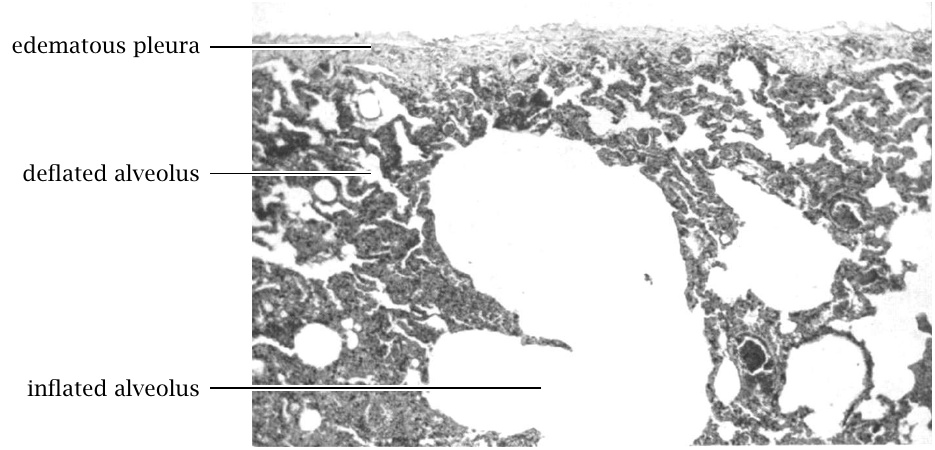
This picture shows one of the rare extant and documented samples of histopathology in an early victim. We see some alveoli which are grossly inflated by trapped air; this comes about through damage to the small bronchi that feed these alveoli. The distended alveoli will compress the adjoining ones; neither will function properly.
The pathologists who described this case called these findings ‘hard to interpret’ [23]. While this is true as long as the assumed cause is radiation, these findings are perfectly typical of acute mustard gas damage to the lungs [24].
8. But what about those nuclear flash burns?

- on the left
- in the middle
- on the right
The picture on the left shows a girl from Iraq with napalm burns. The other two pictures are from a paper published in 1948 that purportedly deals with nuclear flash burns, but which also comments explicitly on the very similar clinical picture seen in the burn victims from Hiroshima / Nagasaki and Tokyo, respectively [25].
All three burn victims show hypertrophic scars of burns that were obviously localized and have sharp, irregularly shaped outlines. Such burns can hardly be expected to result from the exposure to strong flash of light, which should affect all exposed skin areas evenly.
To answer the above question—the “true” flash burn is supposed to be the middle one. Also note that the gentleman on the right is said to have been burned by gasoline which had been ignited by napalm, rather than by napalm directly.
8.1. From the diary of Hiroshima physician Michihiko Hachiya, August 6th
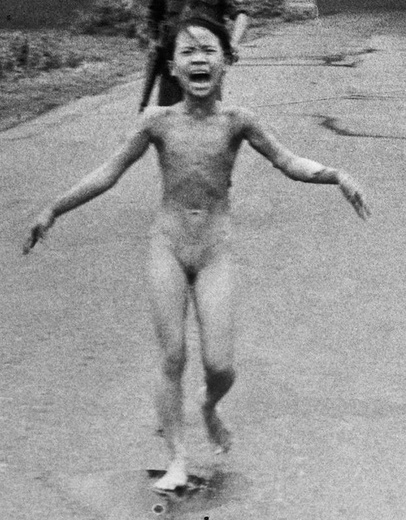
The use of napalm in Hiroshima is supported by multiple lines of evidence, including eyewitness testimony. This quote by Dr. Hachiya [21] evokes the famous “napalm girl” picture that everyone has seen.
Nudity is described by many eyewitnesses. In all likelihood, the victims had simply torn off their clothes in order to get rid of the burning napalm which was sticking to them.
8.2. From the diary of Hiroshima physician Michihiko Hachiya, August 6th (ctd.)
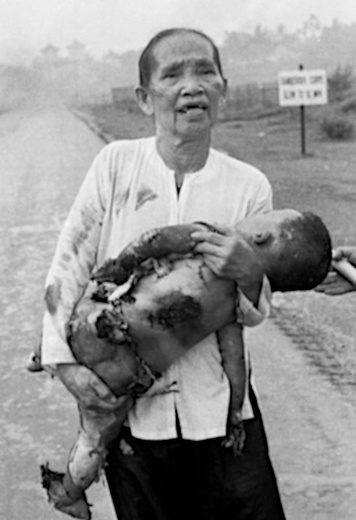
Quotes such as this one can be found aplenty in the literature about the two ‘atomic’ bombings. And again, pictures to match it can be found in the photographic record from Vietnam [26]—which is, however, overall very sparse. This one shows the little cousin of “napalm girl” Kim Phuc. The boy succumbed to his severe burns within one hour of the attack.
8.3. A retinal burn in an American soldier who looked at a nuclear bomb test in the 1950s
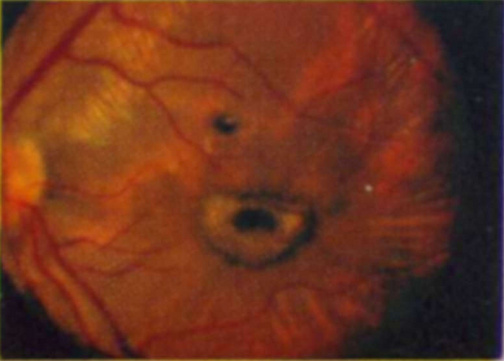
- 0
- 1
- 10
- 1,000
- 100,000
Burns of the retina can occur at considerable distance from an intense source of light because the refractive apparatus of the eye (the lens and the cornea) focus the light onto one spot of the retina; the high intensity causes a steam explosion inside the retina, which results in this volcano-like appearance.
The effect is well documented in connection with nuclear bomb tests which occurred in later years, both in experimental animals [27] and in accidental exposure of human onlookers [28]. However, it is notable by its absence from the medical literature on Hiroshima and Nagasaki—not a single clinical or pathological report can be found that would describe any such case.
8.4. Delayed burns: an example from Dr. Hachiya’s diary
- (August 6) I opened my eyes; Dr. Sasada was feeling my pulse. What had happened? … I must have fainted.
- (August 7) Dr. Sasada, who had looked after me yesterday, lay on my left. I had thought he escaped injury, but now I could see that he was badly burned. His arms and hands were bandaged …
- (August 8) Dr. Sasada’s face was more swollen this morning than yesterday, and blood-stained pus oozed from his bandaged arms and hands.
- (August 9) Dr. Sasada was worse this morning. His temperature had increased, and he was weaker.
Burns caused by burning napalm should, of course, be manifest immediately; and this was indeed the case with many victims. On the other hand, the chemical burns to the skin caused by mustard gas are known to become manifest only with some delay. Eyewitness testimony contains numerous descriptions of burns which fit that pattern—as with the colleague described in this excerpt from Dr. Hachiya’s diary [21].
Several days later, Hachiya notes in his diary that his colleague developed spontaneous bleedings (petechiae) several days later, which is consistent bone marrow damage by mustard gas.
9. Special effects
9.1. But what about those atomic shadows?
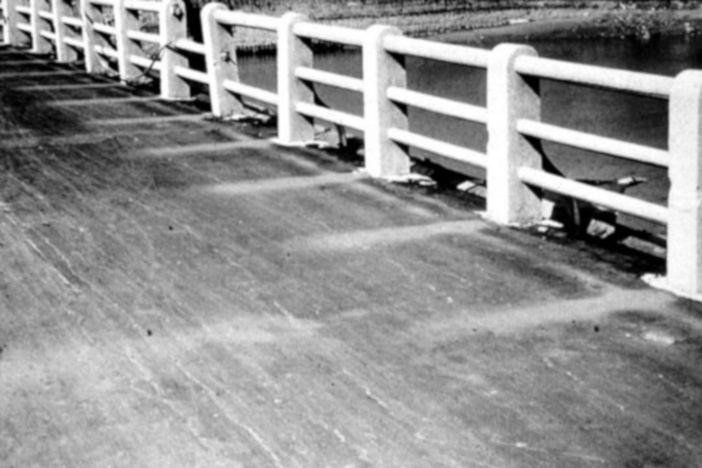
- de Seversky, as of early September:
- “For two days … I searched for … traces of phenomena that could reasonably be tagged ‘unusual.’ I couldn’t find them.”
- Averill Liebow, on October 31:
- “Took Colonel Oughterson and Nagasaki guests on what we have now laid out as the ‘grand tour.’ … All were fascinated by the outlines of men and vehicles on the Bantai Bridge.”
The “grand tour” alluded to by Liebow [15], a pathologist and member of the Joint Commission, included a good number of similar further attractions. In combination, these two quotes make it plain that these special effects must have been created at some point in time between the visit of de Seversky in early September and the arrival of Liebow and colleagues, which occurred in mid October.
Interestingly, some weeks later Liebow complained to his diary that the shadows in the various places were already rapidly fading—they seem to have been designed not to be preserved long enough for close scrutiny.
9.2. The shadows on the Bantai bridge: too short for the alleged location of the bomb explosion
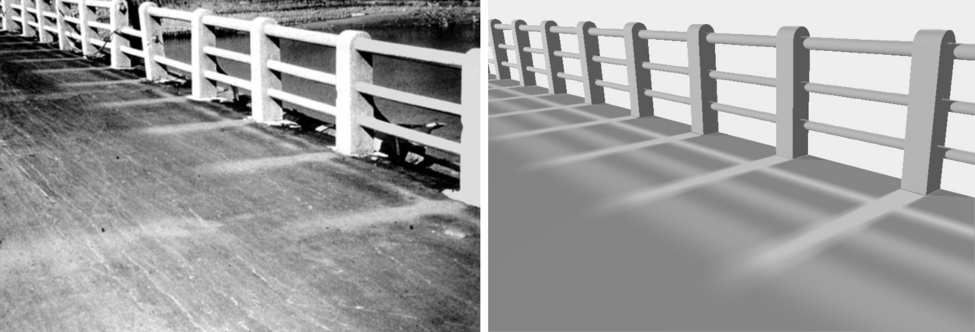
The ‘nuclear’ shadows shown on this particular bridge are said to have been used in determining the location of the epicenter—the site of the bomb explosion in the air—by triangulation.
We can turn this around and reconstruct the shadows from the known location of the bridge relative to the epicenter. This was done in the simulated scene on the right. It is clear that the simulated shadows are significantly longer than the ones that had been spray-painted on the tarmac of the bridge. This discrepancy amounts to another clear inconsistency in the official atomic bomb fairy tale.
10. Summing up: how was it done?
- Fireworks of sorts for creating a flash, a bang, and a cloud
- The bang likely involved multiple large bombs detonated in the air, above different parts of the cities
- In-air detonation of napalm bombs, with burning napalm raining down on the cities
- In-air detonation of sulfur mustard bombs
The assumption of in-air detonations is based on the noted scarcity of witness reports on bombs hitting the ground, as well as other kinds of eyewitness testimony.
10.1. Managing the aftermath
- In Hiroshima, rainfall was induced, quite possibly with cloud seeding
- While it was raining, oily ‘black rain’ was sprayed from planes to disperse radioactive reactor waste (‘fallout’)
- Napalm burns were explained as ‘flash burns’
- The Japanese people who had experienced the poison gas were told a story about ‘atom bomb gas’
- ‘Atomic shadows’ were spray-painted after the beginning of September
It is intriguing that ‘black rain’ is recorded only for Hiroshima but not for Nagasaki. A possible interpretation is that this was considered a failed experiment. The watery rain was probably intended to cover up the small amount of oily rain containing fallout which was sprayed from airplanes. The oil, in turn, was used to prevent the fallout from being washed away by the watery rain, to make it stick to surfaces on the ground for easier detection.
Where things went wrong was that the oily rain collected soot on its way down through the smoke clouds from the burning city, which made it rather conspicuous. This may well have been the reason to drop this particular bit of fakery for the Nagasaki bombing.
10.2. How were the Japanese deceived?
They weren’t, or at least their government wasn’t—they were forced to collude in staging the bombing.
There are many reasons that point to this conclusion. A straightforward one is the failure to trigger an air alarm in both cities—in fact, in Hiroshima an alarm had been in effect but was lifted minutes before the bombing. Since there was no single nuke, there must have been many planes dropping various kinds of conventional ordnance, and it is not possible that the Japanese air defense would have overlooked these.
11. Why was it done?
- Not to get the Japanese to surrender—they had been asking for peace since late 1944
- Not to pressure Stalin—he was not deceived either
- The real target was the US and international public, which should be frightened into submitting to a brand-new, benevolent world government
- Possibly to discourage the American public from continuing to support the fight of the Chinese nationalists against the communists
Alperovitz [29] has convincingly demonstrated that the Japanese had been asking for peace for many months before the war ended, on terms very similar to those which came into effect after their capitulation in August. The US Joint Chiefs of Staff were keen on negotiations, but Truman refused them and went through with the bombings.
It seems likely that the Japanese held out as long as they did because they did NOT want to collude in staging this cruel massacre, but in the end they saw no other way out of their continuing and worsening misery.
11.1. An early book on the blessings of world government (1946)
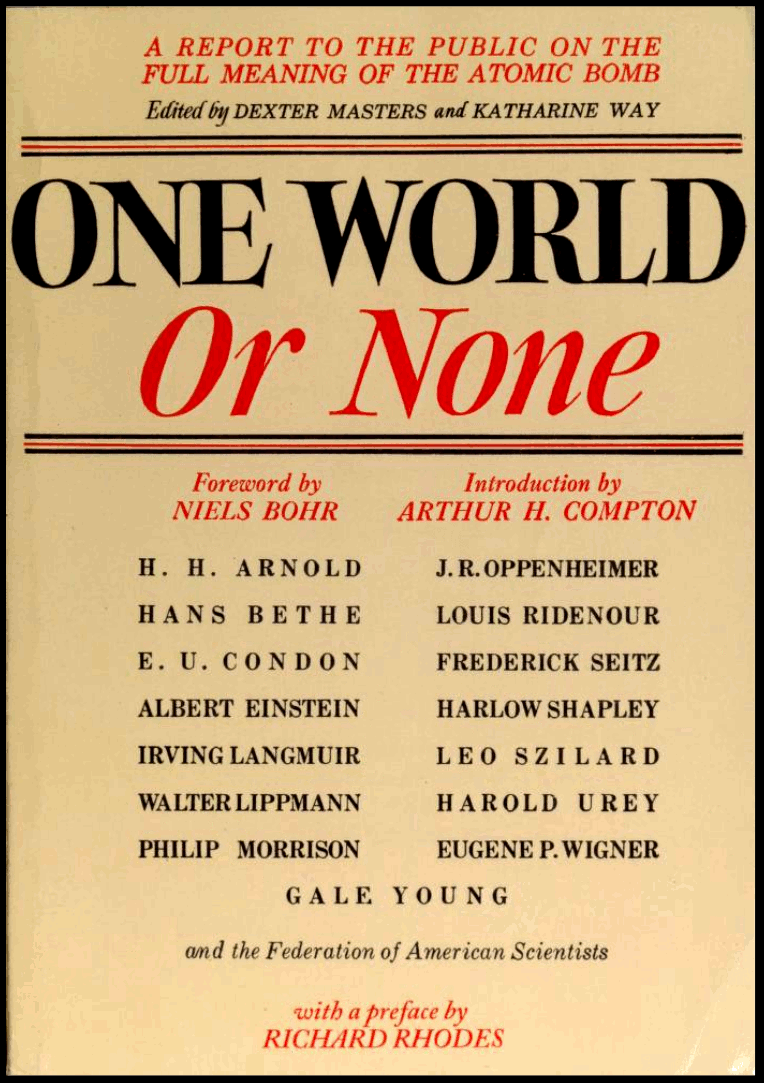
The usual suspects have been at it for a long time … at this point in history, the suggestion that this was just another ploy to usher in a world government will probably surprise no one, at least not among those who are willing to consider this entire story at all. The book in question [30] also contains a chapter by Irving Langmuir, who just might have been responsible for making the rain in Hiroshima.
The reason why the world government scheme fell through in the end was most likely Soviet resistance—Joseph Stalin apparently wanted no part of it; and some Soviet scientists called out the whole scheme for what it was—a new American colonial empire in a fancy dress [31].
11.2. OMG! Nukes, climate change, and COVID! We are DOOMED!
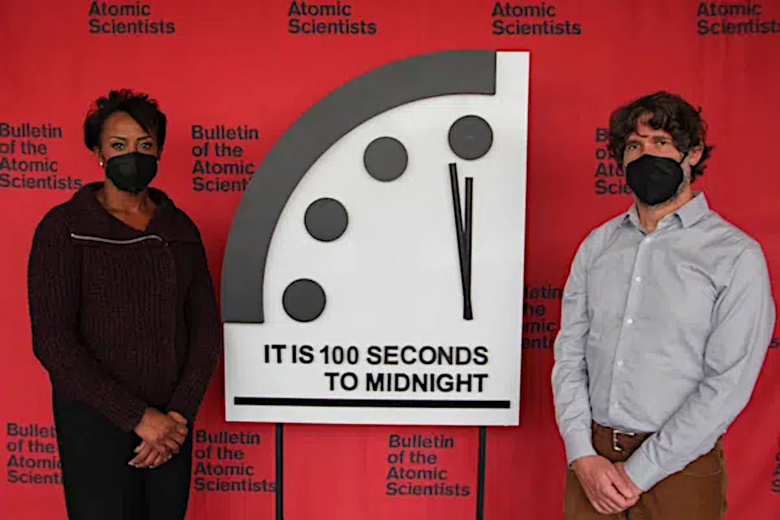
The so-called Bulletin of the Atomic Scientists is in charge of keeping the nuclear scare going, and it has in the meantime adopted other worthy causes such as climate change, COVID-19, and “disinformation.” Coincidentally, their solution to each of these problems is more control and more centralized governance.
11.3. “It’s got nothing to do with atoms.”
Werner Heisenberg, on first learning of the Hiroshima bombing …
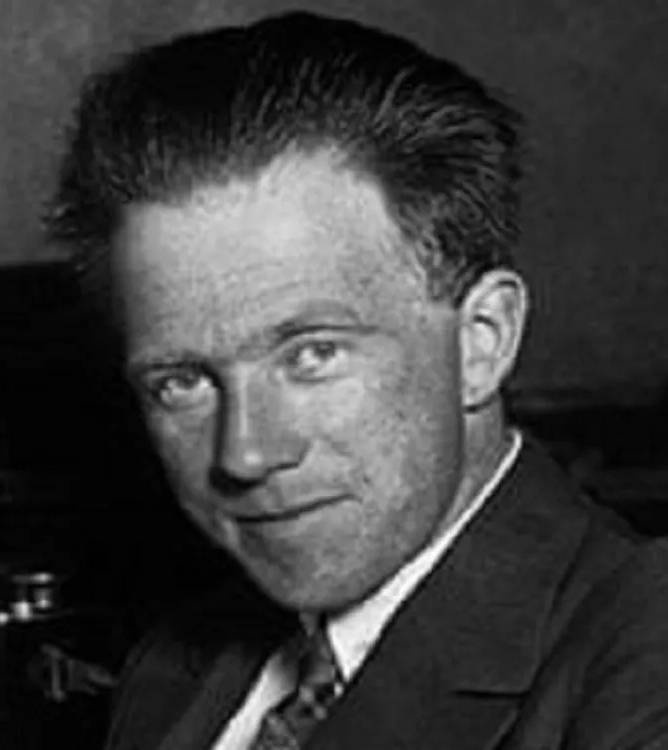
Heisenberg was at the time interned in Britain, together with the entire elite of German nuclear physics; and all of their conversations were taped.
The men eventually convinced each other that the bombings might have been real—without, of course, having access to any specific technical information. I wonder what might have happened to them if the view expressed initially by Heisenberg had prevailed—if they had come up with a clear-cut reason why atomic bombs would not work. I suspect (but cannot prove) that this possibility was the very reason for confining these men at this time.
12. A serious book by a serious scientist who claims that atomic weapons will not work in principle
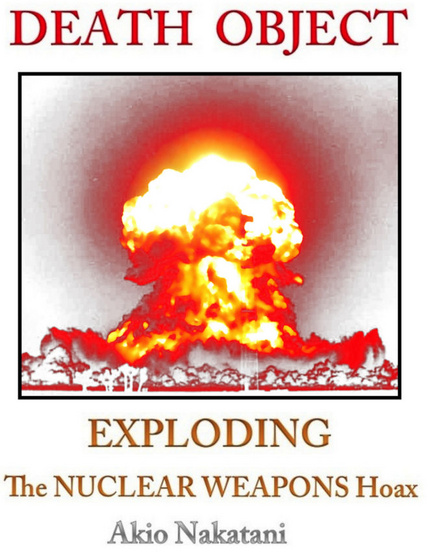
- Akio Nakatani, a professor of applied mathematics, has performed detailed computer simulations of fission bombs
- Result: the alleged Hiroshima and Nagasaki bomb designs could not have worked
- The book does not provide any details on these simulations, apparently for legal reasons
I recommend Nakatani’s book [32] to anyone interested in this subject, but judging the merit of his far-reaching claims is beyond my pay grade. On the one hand, atomic bombs have never been used in war, suggesting that indeed they do not work. On the other hand, there is plenty of nuclear fallout, suggesting that some sorts of nuclear detonations have indeed happened.
Whether these explosions reached anywhere near the strength ascribed to them, and whether these explosive devices would indeed be suitable as weapons, are questions which I will leave to others.
References
- (1950) Air Power: Key to Survival (Simon and Schuster).
- (1996) νc137Cs concentration in soil samples from an early survey of Hiroshima atomic bomb and cumulative dose estimation from the fallout. Health Phys. 71:340-6
- (2012) Isotope ratios of 235U/238U and 137Cs/235U in black rain streaks on plaster wall caused by fallout of the Hiroshima atomic bomb. Health Phys. 102:154-60
- (1971) Plutonium Content of Soil at Nagasaki. Nature 234:92-93
- (2008) Depositional records of plutonium and 137Cs released from Nagasaki atomic bomb in sediment of Nishiyama reservoir at Nagasaki. J. Environ. Radioact. 99:211-7
- (1945) Notes of the Interim Committee meeting, Thursday, 31 May 1945.
- (1967) Estimation of the air dose from the atomic bombs in Hiroshima and Nagasaki. Health Phys. 13:149-61
- (2006) Dose estimation for atomic bomb survivor studies: its evolution and present status. Radiat. Res. 166:219-54
- (1955) Statistical Analysis of the Medical Effects of the Atomic Bombs: From the Report of the Joint Commission for the Investigatin of the Effects of the Atomic Bomb in Japan (Technical Information Service, United States Atomic Energy Commission [prepared by the] Army Institute of Pathology, Office of the Air Surgeon).
- (1946) A clinical syndrome following exposure to atomic bomb explosions. J Am Med Assoc 131:504-6
- (1971) Atomic bomb radiation estimation at {ABCC} (Atomic Bomb Casualty Commission).
- (2012) The acute gastrointestinal subsyndrome of the acute radiation syndrome: a rhesus macaque model. Health Phys. 103:411-26
- (1995) LSS Report 11 Mortality and Acute Effects Data Set.
- (1956) Medical effects of the atomic bomb in Japan (McGraw-Hill).
- (1985) Encounter with disaster: a medical diary of Hiroshima, 1945 (Norton).
- (2017) Rediscovery of an old article reporting that the area around the epicenter in Hiroshima was heavily contaminated with residual radiation, indicating that exposure doses of A-bomb survivors were largely underestimated. J. Radiat. Res. 58:745-754
- (1995) Censorship of the atomic bomb casualty reports in occupied Japan. A complete ban vs temporary delay. JAMA 274:520-2
- (1980) Children of Hiroshima (Publishing Committee for “Children of Hiroshima”).
- (2007) The atomic plague in: Rebel journalism: the writings of Wilfred Burchett.
- (1947) U.S. Explosive Ordnance (U.S. Navy Bureau of Ordnance).
- (1955) Hiroshima Diary: The Journal of a Japanese Physician, August 6-September 30, 1945 (University of North Carolina Press).
- (1988) Hibakusha (Kosei Publishing Company).
- (1949) Pathology of atomic bomb casualties. Am. J. Pathol. 25:853-1027
- (1933) The residual effects of warfare gases.
- (1948) Observations of burn scars sustained by atomic bomb survivors; a preliminary study. Am. J. Surg. 75:417-34
- (2000) The girl in the picture: the story of Kim Phuc, the photograph, and the Vietnam War (Viking).
- (1957) Experimental production of flash burns in the rabbit retina. Am. J. Ophthalmol. 43:711-8
- (1956) Human chorioretinal burns from atomic fireballs. AMA Arch. Ophthalmol. 55:205-10
- (1995) The decision to use the atomic bomb (Alfred A. Knopf).
- (1946) One World Or None: A Report to the Public on the Full Meaning of the Atomic Bomb (New Press).
- (1948) Open Letter to Dr. Einstein—From Four Soviet Scientists. Bull. At. Sci. 4:34-37
- (2017) Death Object: Exploding the Nuclear Weapons Hoax (CreateSpace).